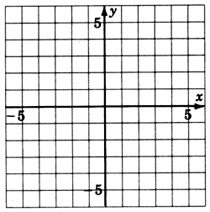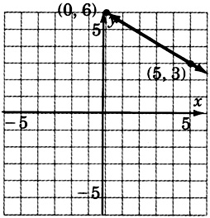This module is from Elementary Algebra</link>by Denny Burzynski and Wade Ellis, Jr.
Methods of solving quadratic equations as well as the logic underlying each method are discussed. Factoring, extraction of roots, completing the square, and the quadratic formula are carefully developed. The zero-factor property of real numbers is reintroduced. The chapter also includes graphs of quadratic equations based on the standard parabola, y = x^2, and applied problems from the areas of manufacturing, population, physics, geometry, mathematics (numbers and volumes), and astronomy, which are solved using the five-step method.Objectives of this module: be able to place a quadratic equation into standard form, be familiar with the zero-factor property of real numbers.
Overview
- Standard Form of A Quadratic Equation
- Zero-Factor Property of Real Numbers
In Chapter (
[link] ) we studied linear equations in one and two variables and methods for solving them. We observed that a linear equation in one variable was any equation that could be written in the form
and a linear equation in two variables was any equation that could be written in the form
where
and
are not both 0. We now wish to study quadratic equations in one variable.
Quadratic equation
A
quadratic equation is an equation of the form
The
standard form of the quadratic equation is
For a quadratic equation in standard form
is the coefficient of
is the coefficient of
is the constant term.
Sample set a
The following
are quadratic equations.
Notice that this equation could be written
Now it is clear that
Notice that this equation could be written
Now it is clear that
The following are
not quadratic equations.
The expression on the left side of the equal sign has a variable in the denominator and, therefore, is not a quadratic.
Practice set a
Which of the following equations are quadratic equations? Answer “yes” or “no” to each equation.
Zero-factor property
Our goal is to solve quadratic equations. The method for solving quadratic equations is based on the
zero-factor property of real numbers. We were introduced to the zero-factor property in Section
[link] . We state it again.
Zero-factor property
If two numbers
and
are multiplied together and the resulting product is 0, then at least one of the numbers must be 0. Algebraically, if
then
or
or both
and
Sample set b
Use the zero-factor property to solve each equation.
If
If
then
If
then
must be 0, since 5 is not zero.
If
then
If
then
If
then
Practice set b
Use the zero-factor property to solve each equation.
Exercises
For the following problems, write the values of
and
in quadratic equations.
For the following problems, use the zero-factor property to solve the equations.
Exercises for review
(
[link] ) Factor
by grouping.
(
[link] ) Construct the graph of

(
[link] ) Find the difference:
(
[link] ) Simplify
(
[link] ) Solve the radical equation


